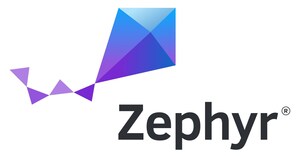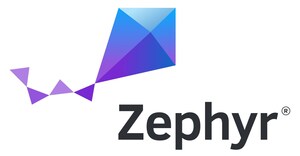SAN FRANCISCO, Sept. 30, 2020 /PRNewswire/ -- Google and Facebook have selected the Zephyr Real-Time Operating System (RTOS) as one of the key technologies that will be used to build their next generation of infrastructure and products. They will collaborate with other Platinum members of The Zephyr™ Project, an open source project at the Linux Foundation that builds a safe, secure and flexible RTOS for the Internet of Things (IoT) in space-constrained devices, including Intel, Nordic Semiconductor, NXP and Oticon to ensure IoT security and critical safety challenges.
"Google believes in building secure products for all of our users, and we are excited to join forces with Zephyr to develop a secure real time operating system," said Puneet Kumar, Director of Engineering, Chrome OS. "The Zephyr Project has built a strong community of experts, and we look forward to working with all of the participating organizations to improve the state of the RTOS our products depend on."
Facebook has a long history of open source investment. They recently joined the Linux Foundation at the Platinum-level and are actively involved in multiple open source communities in the semiconductor space.
"Facebook is pleased to support the Zephyr project which shows great promise in accelerating the pace of RTOS innovation," said Ric Wheeler, Engineering Manager. Olof Johansson, Engineering Director, adds that, "The project's focus on establishing neutral governance, encouraging a diverse development community, and the attention to security will help create a thriving and sustainable open source ecosystem around Zephyr. We are excited to be part of that."
Zephyr supports the fight to keep COVID-19 in check
Currently, the project is seeing an uptick in products developed on the RTOS, specifically those that help monitor COVID-19. From distance trackers to contact tracing wearables and smart safety shoes, developers are creating products based on Zephyr RTOS because of its small footprint, integrated stacks and its dependability to speed time to market. In fact, many of these products were developed and available in less than 3 months.
While contact tracing is effective, it's often difficult to build a reliable timeline of who an infected person was exposed to. Laird Connectivity's Sentrius™ BT710 wearable tracker/multi-sensor is worn by personnel and communicates with the Sentrius™ MG100 gateways in a user's facility. When BT710 sensors come into range of the MG100, they can upload their logged events that the MG100 routes via cellular to a cloud application. This process establishes linkage and identifies people who have come into contact with an infected person.
Construction workers find that wearing FFP2 masks all day during physical labor is uncomfortable and restrictive. Intellinium have updated their Safety Pods technology to help protect construction workers during the pandemic. Their smart shoes have a new smart PPE feature that alerts a worker through a vibrating signal on the smart shoes when there is a risk of getting too close to someone. When the worker gets this signal, he can either put a mask on or he can move away from the other workers. Another new product that has emerged is Phytec Distance Tracker Kit, which tracks distance measurement between two or more people in a workplace.
"Zephyr's focus on product level quality and integrating key technologies have made it an ideal platform for rapid time to market for IoT based solutions," said Kate Stewart, Senior Director of Strategic Programs at The Linux Foundation. "With the COVID-19 situation challenging us all, it's very encouraging to see companies choose to use Zephyr as part of their solutions."
Neutral governance opens doors
Developers have to carefully select an RTOS so they don't experience delayed release dates, hundreds of thousands of dollars in remediation efforts, faulty usability and negative experience for end users.
The Zephyr community is proud to announce the latest release 2.4 is now available. This release expands support for product makers by adding infrastructure to support use of commercial toolchains, the more testable TCP2 stack now the default, and adding support for virtual memory management. In addition, the Bluetooth host support has been extended to include periodic advertisement and isochronous channels. There is now support for ARM Cortex-M1/M3 DesignStart FPGA and NXP i.MX RT685, i.MX8M Mini, and LPC11U6x, as well as a variety of other board and shield updates.
These technical benefits are only part of the reason Zephyr is one of the fastest growing adopted RTOS in the landscape. As part of the Linux Foundation ecosystem, the project leverages an open governance that practices principles of transparency, participation and accountability.
"Open source communities that practice transparency, encourage active participation, and recognize contributors will thrive, evolve, and deliver the strongest outcomes for the project," said Joel Stapleton, Zephyr Project Governing Board Chair and Technical Product Manager at Nordic Semiconductor. "The level of support new members bring deeply benefits our community and we look forward to seeing Google and Facebook's contributions to the Zephyr ecosystem."
In addition to Google and Facebook, the Zephyr Project welcomes the FIWARE Foundation and its project Micro-ROS to its community. They join Adafruit, Antmicro, Eclipse Foundation, Foundries.io, Intel, Linaro, Nordic Semiconductor, NXP®, Oticon, SiFive, Synopsys, Texas Instruments and more to create an open hardware and software ecosystem using the Zephyr OS.
"We are excited the Zephyr Project and Micro-ROS are collaborating to integrate resource constrained devices seamlessly into the ROS 2 (Robot Operating System) ecosystem," said Jaime Martin Losa, CEO of eProsima. "Micro-ROS is an open source robotic operating system which bridges extremely resource constrained platforms to more complex robotic architectures of ROS 2, the de facto standard robotic framework. We look forward to bringing our expertise to the Zephyr ecosystem as we complement each other to easily create heterogeneous distributed robotic systems."
As part of Facebook joining the Zephyr community, Olof Johansson and Ric Wheeler will join the Technical Steering Committee.
Where to see Zephyr next
The Zephyr Project will be present at the Linux Foundation's Open Source Summit Europe, a virtual event on October 26-29. Several members such as the Eclipse Foundation, Intel, Linaro and Synopsys will be giving Zephyr-related presentations. Learn more here.
Additionally, on October 29, Zephyr will host a Mini-Summit that will offer an overview of the communication stacks, the LTS and release plans, security, safety certification and a panel Q&A session. Registration is free for Open Source Summit and Embedded Linux Conference attendees.
To learn more about Zephyr RTOS, visit the Zephyr website and blog.
About the Zephyr™ Project
The Zephyr Project is a small, scalable real-time operating system for use on resource-constrained systems supporting multiple architectures. To learn more, please visit www.zephyrproject.org.
About the Linux Foundation
Founded in 2000, the Linux Foundation is supported by more than 1,000 members and is the world's leading home for collaboration on open source software, open standards, open data, and open hardware. Linux Foundation's projects are critical to the world's infrastructure including Linux, Kubernetes, Node.js, and more. The Linux Foundation's methodology focuses on leveraging best practices and addressing the needs of contributors, users and solution providers to create sustainable models for open collaboration. For more information, please visit us at linuxfoundation.org.
Media Contact:
Maemalynn Meanor
[email protected]
SOURCE The Zephyr Project

WANT YOUR COMPANY'S NEWS FEATURED ON PRNEWSWIRE.COM?
Newsrooms &
Influencers
Digital Media
Outlets
Journalists
Opted In






Share this article